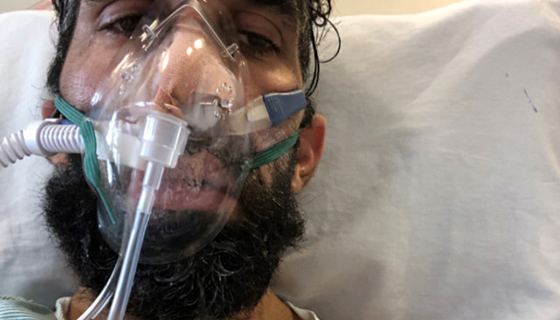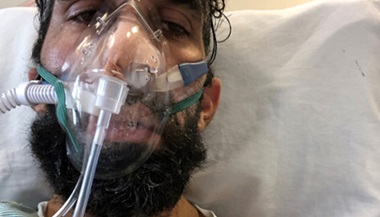Pulse Oximetry
What is pulse oximetry?
Pulse oximetry is a test used to measure the oxygen level (oxygen saturation) of the blood. It's an easy, painless measure of how well oxygen is being sent to parts of your body furthest from your heart, such as the arms and legs.
A clip-like device called a probe is placed on a body part, such as a finger or ear lobe. The probe uses light to measure how much oxygen is in the blood. This information helps the healthcare provider decide if a person needs extra oxygen.
Why might I need pulse oximetry?
Pulse oximetry may be used to see if there is enough oxygen in the blood. This information is needed in many kinds of situations. It may be used:
-
As part of a routine wellness check
-
During or after surgery or procedures that use sedation
-
To see how well lung medicines are working
-
To check a person’s ability to handle increased activity levels
-
To see if a ventilator is needed to help with breathing, or to see how well it’s working
-
To check a person who has moments when breathing stops during sleep (sleep apnea)
Pulse oximetry is also used to check the health of a person with any condition that affects blood oxygen levels, such as:
Your healthcare provider may have other reasons to advise pulse oximetry.
What are the risks of pulse oximetry?
All procedures have some risks. The risks of this procedure may include:
-
Incorrect reading if the probe falls off or is not fully attached to the earlobe, toe, or finger
-
Incorrect reading due to skin coloring (pigmentation). Pulse oximetry may miss low oxygen saturations when used on darker skin. Talk with your provider about the accuracy of your results if you have darker skin.
-
Skin irritation from adhesive (if used) on the probe
Your risks may vary depending on your general health and other factors. Ask your healthcare provider which risks apply most to you. Talk with them about any concerns you have.
How do I get ready for pulse oximetry?
Your healthcare provider will explain the procedure to you. Make sure to ask any questions you have about the procedure. If a finger probe is to be used, you may be asked to remove fingernail polish.
Your healthcare provider may have other instructions for getting ready.
What happens during pulse oximetry?
You may have your procedure as an outpatient. This means you go home the same day. Or it may be done as part of a longer stay in the hospital. The way the procedure is done may vary. It depends on your condition and your healthcare provider's methods. In most cases, pulse oximetry will follow this process:
-
A clip-like device called a probe will be placed on your finger or earlobe. Or a probe with sticky adhesive may be placed on your forehead or finger.
-
The probe may be left on for ongoing tracking.
-
The oxygen probe may be left on while you walk to see if your oxygen falls.
-
Or it may be used to take a single reading. The probe will be removed after the test.
What happens after pulse oximetry?
You can go home after the test, unless you are in the hospital for another reason. You may go back to your normal diet and activities as instructed by your healthcare provider. Your healthcare provider may give you other instructions after the procedure.






